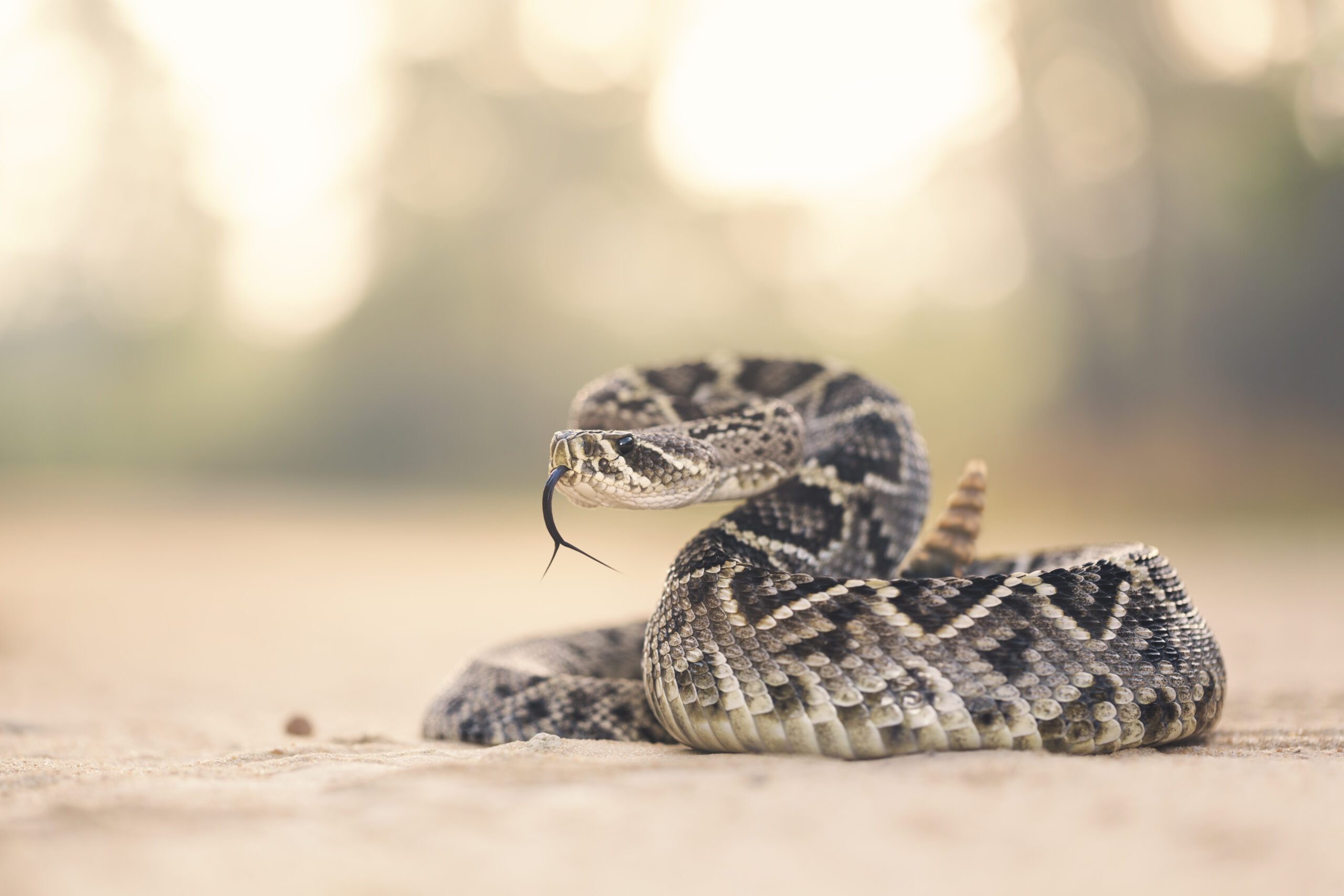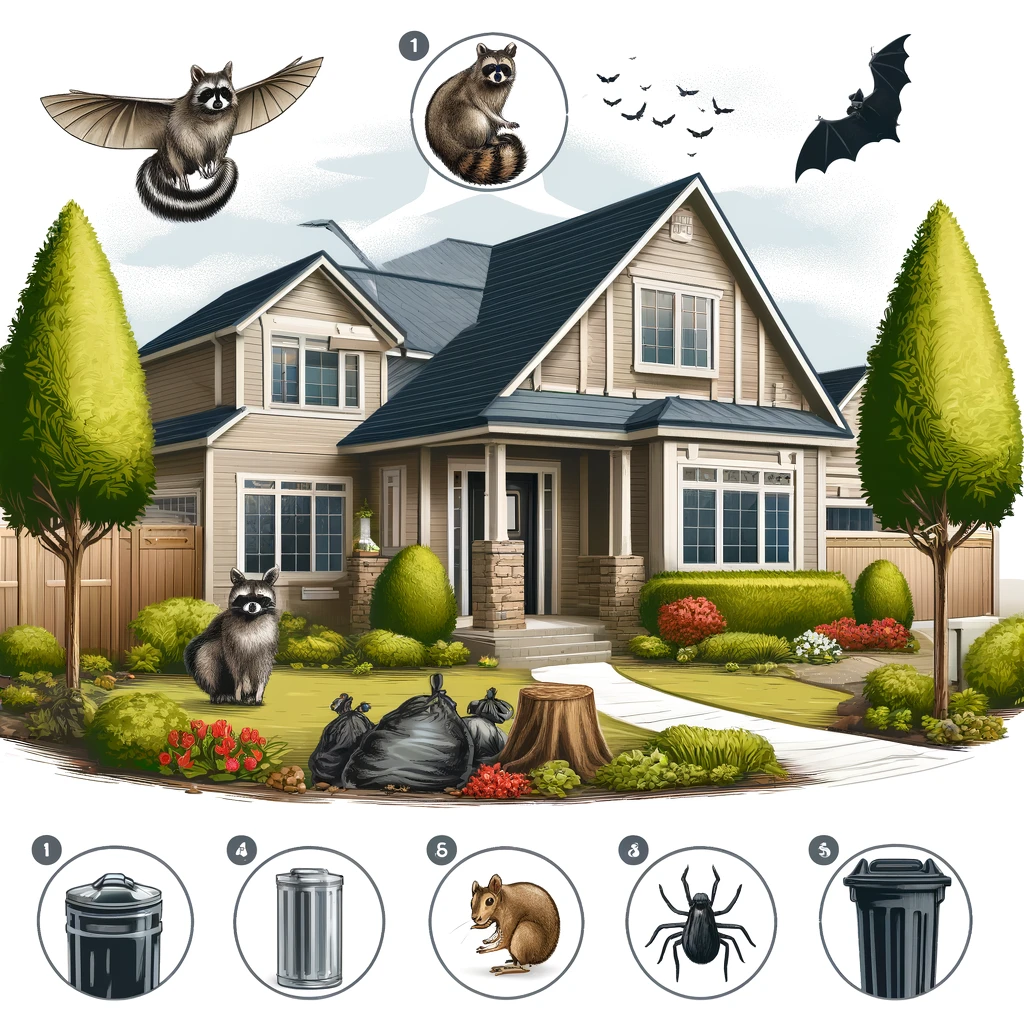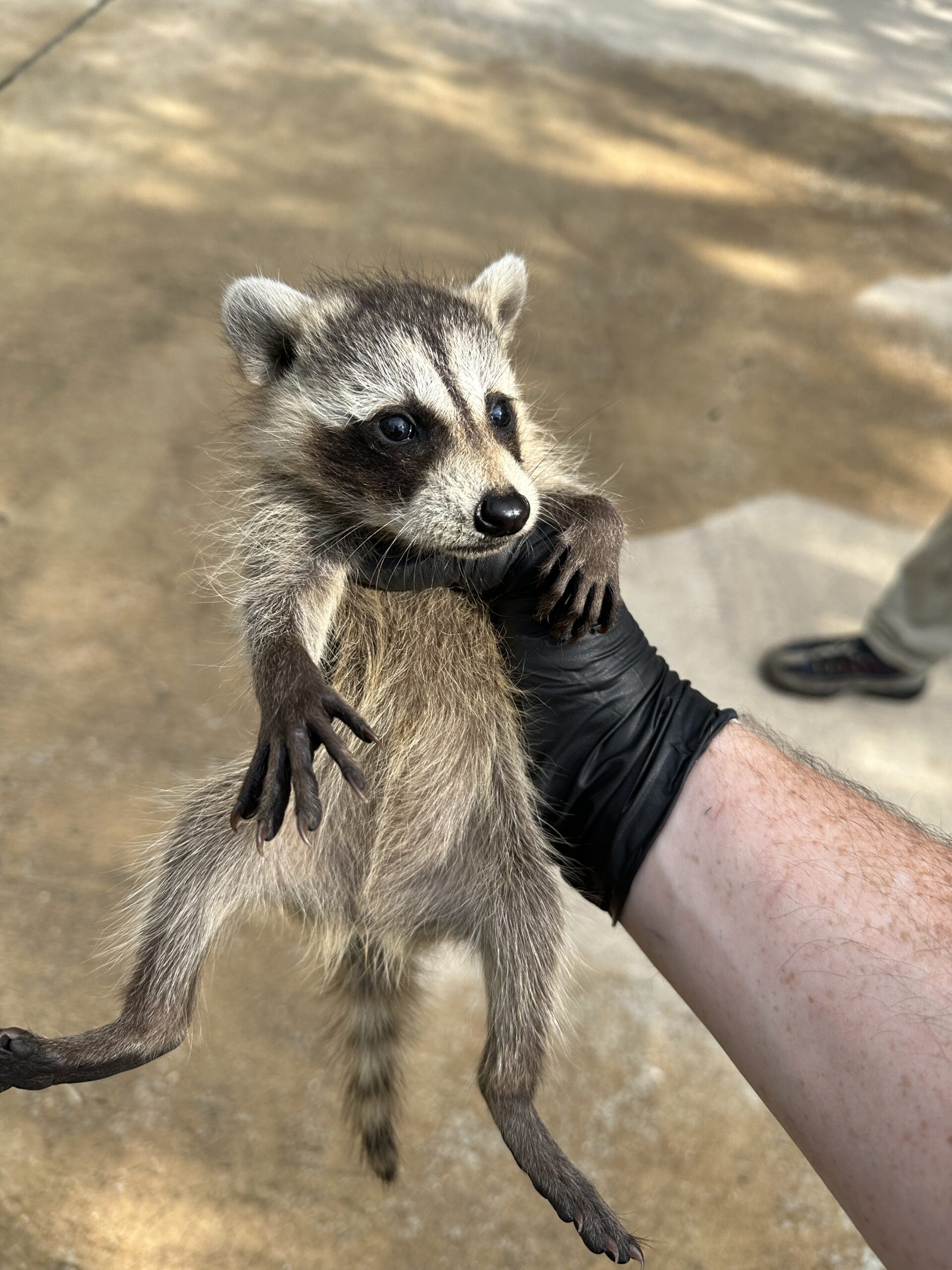Venomous or Harmless? Understanding the Dangerous and Non-Threatening Snakes of Florida
Florida is known for its warm climate, beautiful beaches, and unfortunately, its abundance of snakes. For many, the thought of encountering a snake can be terrifying, especially when you’re unsure if it’s venomous or harmless.
In this article, we aim to provide clarity by delving into the dangerous and non-threatening snakes that call Florida home. Whether you’re a resident, a frequent visitor, or just curious about these slithering creatures, understanding their behavior and identifying their differences is essential for your safety.
Snakes like the Eastern diamondback rattlesnake and the cottonmouth are among the venomous species found in Florida, while non-venomous snakes like the Eastern indigo snake and the Florida pine snake pose no threat to humans. We’ll explore their distinct characteristics, habitats, and habits, equipping you with the knowledge needed to identify and handle encounters with these reptiles.
Join us as we uncover the fascinating world of Florida’s snakes, separating the dangerous from the harmless and empowering you with the information you need to coexist safely with these creatures in the Sunshine State.
Characteristics of venomous snakes
While venomous snakes require caution, it’s important to remember that not all snakes in Florida pose a threat to humans. Many snakes found in the state are non-venomous and play a vital role in maintaining the ecosystem’s balance.
Common Non-Venomous Snakes in Florida
1. Black Racer: The black racer is a non-venomous snake commonly found in Florida. It is known for its speed and agility, making it an excellent hunter of rodents and other small animals. Black racers are typically black with a white chin, and they can grow up to 6 feet in length.
2. Eastern Garter Snake: The Eastern garter snake is another non-venomous species found in Florida. It has a long, slender body with three distinct yellow stripes running down its back. These snakes are harmless and primarily feed on small invertebrates and amphibians.
3. Eastern Indigo Snake: The Eastern indigo snake is a non-venomous species that is both fascinating and endangered. It is the longest native snake in North America, reaching lengths of up to 8 feet. Eastern indigo snakes are known for their glossy black coloration and play a crucial role in controlling rodent populations.
Identifying Non-Venomous Snakes
To identify non-venomous snakes in Florida, look for round pupils instead of the elliptical pupils found in venomous snakes. Non-venomous snakes also tend to have a more slender and elongated head compared to venomous snakes. It’s important to note that while non-venomous snakes may bite if threatened, their bites are generally harmless and rarely require medical attention. Always enlist the help of a wildlife professional if you are unaware of the species of snake you have encountered.
—
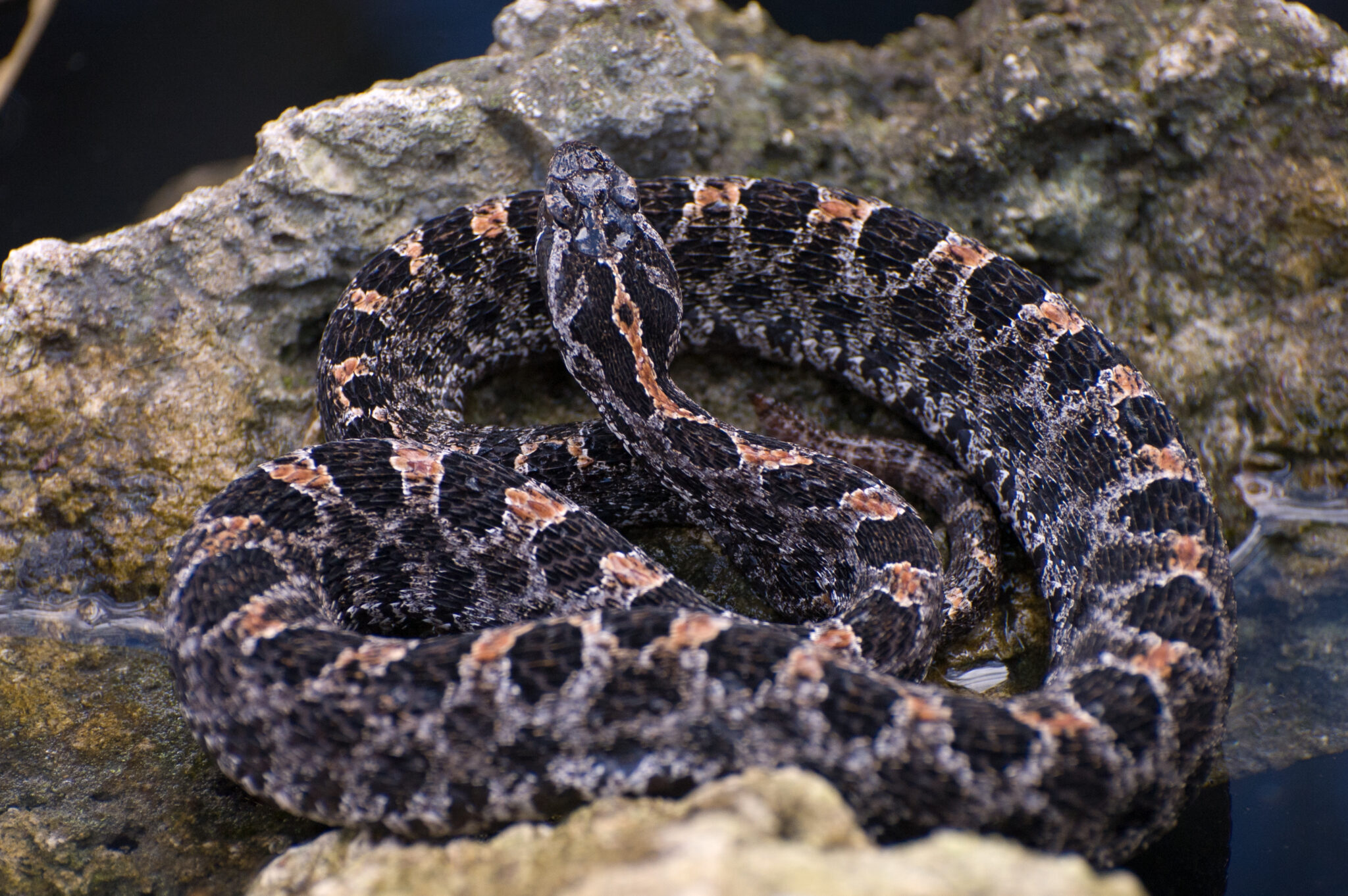
Distinguishing features of venomous snakes
Encountering snakes in Florida is not uncommon, but with the right knowledge and precautions, you can ensure your safety and coexist peacefully with these reptiles.
1. Stay Calm: If you come across a snake, it’s important to remain calm. Most snake bites occur when people panic and make sudden movements.
2. Keep Your Distance: Maintain a safe distance from any snake you encounter. Remember that snakes typically do not seek out human interaction and will usually retreat if given the opportunity.
3. Do Not Approach or Handle Snakes: Unless you are a trained professional, it is best to avoid handling snakes altogether. Even non-venomous snakes can bite if they feel threatened, and it’s crucial to respect their space and natural behaviors.
4. Educate Yourself: Learn to identify the different species of snakes found in Florida. Understanding their habits, preferred habitats, and distinguishing features can help you determine whether they are venomous or non-venomous.
5. Protect Your Property: If you live in an area prone to snake encounters, take steps to snake-proof your property. Seal any gaps or holes that snakes could use to enter your home or yard. A professional wildlife service company can help with these measures.
Remember, snakes play a vital role in the ecosystem, so it is essential to respect their presence and ensure your own safety by following these guidelines.
—
Non-venomous snakes of Florida
Florida’s abundance of snakes can be both fascinating and intimidating. By understanding the characteristics, habitats, and habits of venomous and non-venomous snakes, you can confidently navigate encounters with these creatures. Remember to stay calm, keep your distance, and educate yourself to ensure your safety and coexistence with these slithering inhabitants of the Sunshine State. With the knowledge gained from this article, you can appreciate the role snakes play in Florida’s ecosystem while staying informed about potential risks and protecting yourself when necessary.
Common non-venomous snakes in Florida - Black Racer, Eastern Garter Snake, Eastern Indigo Snake
Florida is home to a variety of non-venomous snakes that play an important role in the ecosystem. These snakes are not only harmless to humans but also beneficial as they help control rodent populations. Let’s take a closer look at some of the most common non-venomous snakes you may encounter in Florida.
Black Racer
The Black Racer, also known as the Eastern Racer, is a non-venomous snake found throughout Florida. This sleek and slender snake is known for its glossy black color, which helps it absorb heat from the sun. Black Racers are fast-moving and agile, making them excellent hunters of small mammals, birds, and reptiles. They are commonly found in grassy areas, open woodlands, and near bodies of water. Despite their name, Black Racers are not aggressive towards humans and will usually flee when encountered. If you happen to spot one, consider yourself lucky to witness this beautiful and harmless snake in action.
Eastern Garter Snake
Another non-venomous snake commonly found in Florida is the Eastern Garter Snake. These snakes have a distinct appearance, with a slender body and three longitudinal stripes running along their back. The coloration of Eastern Garter Snakes can vary, ranging from green to brown or gray. They are adaptable and can be found in a wide range of habitats, including forests, gardens, and wetlands. Eastern Garter Snakes primarily feed on small amphibians, insects, and earthworms. Although they may release a foul odor when threatened, they are harmless to humans and play an important role in maintaining the balance of the ecosystem.
Eastern Indigo Snake
The Eastern Indigo Snake is the largest non-venomous snake in North America and is considered a flagship species for conservation efforts in Florida. These majestic snakes can grow up to 8 feet in length and have a glossy black appearance, often with a bluish sheen. They inhabit a variety of habitats, including pine flatwoods, sandhills, and hardwood hammocks. Eastern Indigo Snakes are not venomous and primarily feed on small mammals, birds, and other snakes. Despite their size, they are generally docile and non-aggressive towards humans. Encountering an Eastern Indigo Snake in the wild is a rare and remarkable experience that showcases the beauty and diversity of Florida’s wildlife.
Identifying non-venomous snakes
Identifying whether a snake is venomous or non-venomous can be a crucial skill when encountering these creatures in the wild. Here are some general guidelines to help you distinguish between the two.
1. Head shape: Venomous snakes typically have a triangular-shaped head, while non-venomous snakes have a more rounded head shape.
2. Pupil shape: Venomous snakes have elliptical or slit-like pupils, similar to a cat’s eye. Non-venomous snakes have round pupils.
3. Fangs: Venomous snakes have hollow fangs used to inject venom into their prey, while non-venomous snakes lack such fangs.
4. Color patterns: While coloration varies among snake species, venomous snakes often have vibrant, warning color patterns, such as bands, spots, or bright colors. Non-venomous snakes may have similar color patterns, but they are generally less vibrant.
Remember, it’s always best to give snakes their space and avoid unnecessary interactions. If you’re unsure whether a snake is venomous or non-venomous, it’s safer to assume it’s venomous and keep a safe distance.

Safety tips for encountering snakes in Florida
Encountering snakes in their natural habitat can be a thrilling experience, but it’s important to prioritize your safety and the well-being of the snakes. Here are some safety tips to keep in mind when encountering snakes in Florida:
1. Observe from a distance: Snakes are generally more afraid of humans than we are of them. If you spot a snake, give it plenty of space and observe it from a safe distance. Avoid approaching or trying to handle the snake, as this may provoke it.
2. Stay on designated trails: When exploring natural areas in Florida, stick to designated trails and paths. This not only minimizes the chances of encountering snakes but also helps preserve their habitats.
3. Wear appropriate footwear: When venturing into snake habitats, it’s important to wear closed-toe shoes or boots to protect your feet from potential snake bites.
4. Educate yourself: Learn about the different snake species found in Florida and their habits. This knowledge will help you make informed decisions and react appropriately when encountering a snake.
5. Consult professionals: If you come across a snake in your yard or near your home and are unsure of its species, it’s best to contact local wildlife authorities or snake removal experts for assistance.
By following these safety tips and respecting the natural habitats of snakes, you can coexist peacefully with these fascinating creatures.
If you need assistance with the removal of snakes from your property in the Northeast Florida area, contact Coastal Wildlife & Pest Services for fast, reliable, and safe service. We are the local snake removal experts!
Conclusion
Understanding the dangerous and non-threatening snakes of Florida is essential for anyone living in or visiting the Sunshine State. By familiarizing yourself with the distinct characteristics, habitats, and habits of these snakes, you can confidently identify and handle encounters with them. Remember, not all snakes in Florida are venomous, and most pose no threat to humans. With the right knowledge and precautions, you can appreciate the beauty and importance of these reptiles while ensuring your safety. So, the next time you come across a snake in Florida, you’ll be able to appreciate its presence and admire it from a safe distance, knowing whether it’s venomous or harmless.
